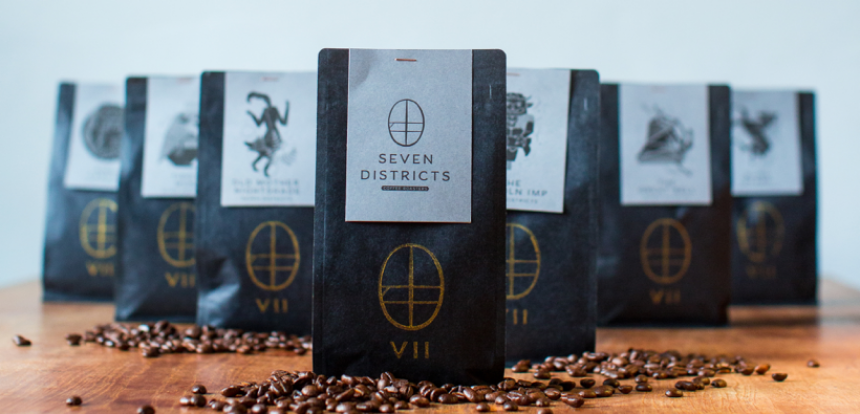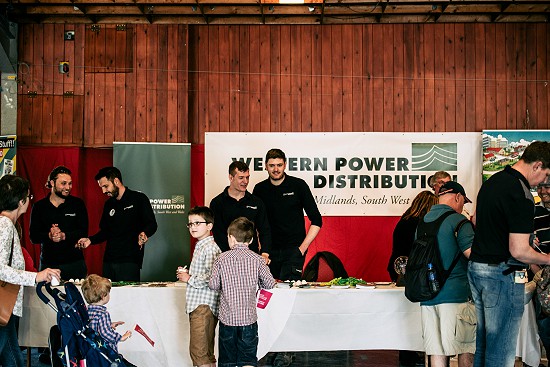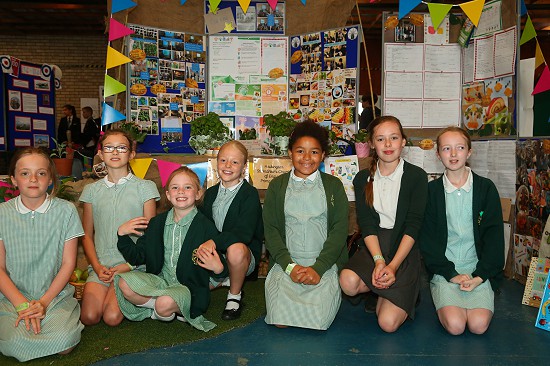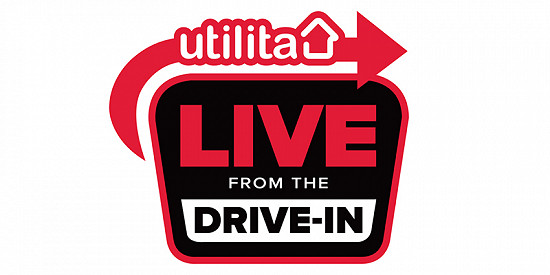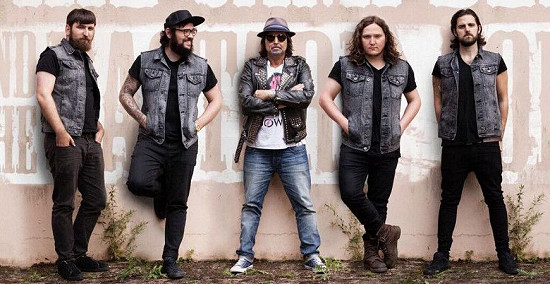A complete guide to coffee 04 Nov
Close your eyes for a moment and try to imagine a day of your life with no coffee. No drip coffee or French press in the morning, no espresso or latte at lunch, no affogato at dinner. Coffee is a core part of our culture and, for many of us, a central part of our day.
One of the awesome things about coffee is how many different types of coffee there are. From espresso shots to creamy mochas, there are a million different ways to enjoy a cup of joe. Read on to learn some more about the types of coffee and how they’re made.
Espresso
Espresso is the basis of most of the drinks we’ll discuss here. It’s the most concentrated form of coffee, with a thick texture and a high caffeine content. Espresso is so strong, in fact, that it is measured in shots because cups would send you into a caffeine overdose.
Espresso is made by forcing very hot steam through finely ground coffee beans. This extracts both solid and dissolved components from the coffee and results in a thick, almost syrupy drink. You can make espresso using the machines you see at coffee shops or by using a much simpler device called a Moka pot.
Ristretto
A ristretto is a more concentrated form of espresso and can be substituted in many coffee drinks. You use the same amount of coffee as in an espresso shot, but half the amount of water. There are a couple of different ways to make ristretto.
The simplest way to make a ristretto is to just use half the water when you set up your espresso shot. This is the easiest way to make ristretto if you’re using a Moka pot. But you can also cut your espresso machine off before the espresso begins to blonde.
Short Macchiato
A short macchiato is an espresso shot with a tiny amount of steamed milk and foam added to mellow the bite of the espresso flavor. There are many ways to make a short macchiato depending on the country you’re in, but a traditional short macchiato uses the rule of thirds.
Put an espresso shot in a short glass or espresso mug, and put a dollop of steamed milk on top of the espresso. Add a dollop of foamed milk on top of that. The bottom third of the drink should be the dark espresso color, the middle third should be a mix of espresso and milk, and the top third should be foam.
Long Macchiato
A long macchiato is made similarly to a short macchiato, but with a double shot of espresso. This drink provides a little more caffeine kick than a short macchiato, but it utilizes the same rule of thirds that its single-shot cousin does.
Start a long macchiato by putting two shots of espresso in a tumbler glass – something see-through works best for this drink. Pour in the steamed milk and the foam on top of the espresso, but don’t stir them in. Instead swirl the glass clockwise a few times to gently mix the middle layer, aiming for that rule of thirds – bottom third espresso, middle third milk mix, top third foam.
Flat White
A flat white is a drink that’s most popular in Australia and New Zealand. It adds some steamed milk to the espresso base, but only as a supporting taste. The flat white also leaves off the foam or chocolate you see on cappuccinos.
To make a flat white, start by making a shot of espresso and pouring it in a mug. Steam milk and pour it over the espresso, being sure to keep the foam in your steamer. The ratio you want to aim for is one part espresso to four parts milk.
Cortado
A cortado is very similar to a flat white, except that, ironically, it’s flatter. A flat white has a velvety texture because the milk is steamed to the point of being slightly foamy. It has the same even mix of espresso and steamed milk, and it’s usually served in a glass with a unique metal wire handle and base.
There’s a variation on the cortado called a Gibraltar that’s something of a cult favorite in San Francisco. It’s served in a special glass, and it has a bit richer texture than the traditional cortado. Because the Gibraltar is served in a glass vessel, it cools quickly, so you should drink it quickly.
Cappuccino
A cappuccino is similar to a flat white, except that the espresso takes a little more of a back seat in terms of flavor. For one thing, cappuccinos add foam on top of the steamed milk, and for another, they add cocoa powder. This gives them a lighter flavor profile than the flat white.
Like a flat white, a cappuccino starts with a shot of espresso in a mug. You top that with an equal amount of steamed milk and then pour an equal amount of foamed milk on top of that. Sprinkle cocoa powder on top of that, and enjoy.
Long Black
A long black and an Americano are almost the same thing and use water to mitigate the espresso flavor instead of milk. It’s believed that this drink originated in Italy during World War II when American soldiers would water down Italian coffee to make it drinkable. An Americano consists of a shot of espresso with three times the amount of hot water poured over the top.
A long black is a step in between espresso and an Americano. This drink uses two espresso shots poured on top of hot water to create a more concentrated flavor. You should aim for a 1:2 ratio, rather than 1:3.
Latte
A latte is one of the most popular coffee drinks thanks to its mild, sweet flavor. It contains a lot more milk than a cappuccino and comes in a variety of flavor options. It’s considered an introductory coffee drink since you avoid most of the bitterness and acidity of the espresso.
A latte starts with a shot of espresso in a cup, though you can add extra shots for a stronger flavor and more caffeine. You add eight or ten ounces of steamed milk on top of that, along with any flavored syrups you may want to use. About a centimeter of foam finishes off the drink.
Piccolo Latte
Piccolo lattes are miniature versions of regular lattes. They preserve the milky flavor of a latte, but they aren’t as overwhelming as a full-size drink can be. Piccolo lattes are served in a 100 mL latte glass, so they’re a little like a milky coffee shot.
You start this drink with a shot of ristretto instead of espresso and top it with enough steamed milk to fill the glass. This drink works well with lighter blend coffees to maintain the low bitterness characteristic of a latte.
Mocha
A mocha is very similar to a latte, but the presence of coffee in the drink makes it its own distinctive thing. This drink is a little richer and sweeter than a latte, somewhere between hot chocolate and coffee. Like a latte, it can also come with additional flavorings.
As with many of these drinks, start a mocha with a shot of espresso in a cup. Add the same amount of chocolate powder or syrup and then add half the amount of steamed milk on top of that. Top the drink off with a small amount of foam and then cocoa powder on top of that.
Affogato
Affogato is the perfect mix of dessert and coffee for that after-dinner pick-me-up. You start with a large scoop of vanilla ice cream in a tumbler glass and pour a single or double shot of espresso over the top. The ice cream will melt into the coffee, creating a rich, sweet, creamy coffee float.
Café Breve
Café breve is a version of a latte that is a little thicker and richer than a traditional latte. It uses half-and-half milk to create a richer foam and a sweeter beverage. In fact, café breve is so sweet that it usually doesn’t need any additional syrup or sugar and may be served as a dessert beverage.
Café breve starts with a shot of espresso topped by an equal amount of steamed half-and-half. You top that off with half the amount of foam to create a creamy, rich coffee drink.
Café au Lait
Café au lait uses different forms of coffee and milk to create a bold, milky beverage with a different flavor profile than cappuccinos or lattes. This drink starts with French press coffee, which is a little richer and bolder than pour-over or filter coffee. And it uses scalded milk instead of steamed milk, which creates a less foamy drink.
The usual ratio for café au lait is half coffee and half scalded milk. If you want the ultimate café au lait experience, visit Café du Monde in New Orleans for a cup of coffee and beignets.
Cold Brew
Cold brew coffee is on a different branch of the coffee family tree than espresso drinks. This method of brewing coffee uses time, rather than heat, to draw flavors out of the coffee. This results in a smoother, less bitter brew that is a little lower in caffeine than traditional brewed coffee.
Cold brew coffee is simple to make; you simply pour cold water over ground coffee beans and wait. Eight hours is usually enough to fully extract the coffee flavor, making this a good beverage to brew overnight. It can be served black over ice or with cream or sweetened condensed milk for added creaminess.
Nitro Cold Brew
Nitro cold brew is a method of creating a smooth, creamy coffee without using any cream. Some people compare the experience of drinking nitro cold brew to that of drinking beer. It has the same rich mouthfeel and creamy quality to it.
Nitro cold brew coffee has nitrogen infused into the coffee the same way one might carbonate a beverage. But nitrogen bubbles are smaller than carbon dioxide bubbles, giving nitro cold brew a smoother texture. This coffee is difficult and expensive to make at home but may be found in a number of coffee shops and now in cans.
Pour-Over Coffee
There are many different ways to create a basic cup of coffee that bring out different flavors and bitterness levels. Pour-over coffee works more or less like it sounds: you pour hot water through coffee grounds in a filter. It uses three separate phases to extract maximum flavor from coffee grounds and create a rich, strong drink.
Step one of pour-over coffee is to wet the grounds, opening them up and beginning to pull out some of the flavor. Then you pour water through the grounds slowly, allowing the flavors to seep through into the mug below. The last pour pulls any lingering flavor out of the coffee and gives the coffee a nice rich finish.
French Press Coffee
French press coffee gives you more control over the strength of your coffee. You can let the grounds steep as long as you like, which is an advantage for people who like a nice strong cup of coffee. This can also make a better base for drinks like café au lait since the coffee flavor won’t get lost against the milk.
To make French press coffee, you’ll need a coarser grind on your beans. Pour a few tablespoons of coffee into your French press and add water just slightly less than boiling. Let it sit for as long as you like (seven minutes is a good time to start with) and then press the filter down to separate the grounds from the coffee.
Learn More About the Types of Coffee
Coffee is one of those miraculous drinks that can be served a million different ways. There are dozens of types of coffee, most involving different ratios of espresso and steamed milk. But you can make these even more your own with different flavor syrups, different roasts of coffee, and different kinds of milk.
If you’d like to experience the best coffee, check out the rest of our site at Seven Districts Coffee. We hand-roast ethically sourced beans to bring you the best coffee experience possible. Shop our coffee today to discover a whole new level of coffee.

